
 |
ELSEVIER SCIENCE |
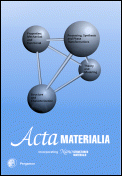 ACTA
MATERIALIA
ACTA
MATERIALIAActa Materialia and its companion journal Scripta Materialia are international Journals for the Science and Engineering of Materials. Acta Materialia's purpose is to publish original papers and occasional critical reviews which advance the understanding of the structural and functional properties of materials: metals and alloys, ceramics, high polymers and glasses. Emphasis is placed on those aspects of the science of materials that are concerned with the relationship between the structure of solids and their properties (mechanical, chemical, electrical, magnetic and optical); with the thermodynamics, kinetics and mechanisms of processes occurring within solids; with experiments and models which help in understanding the macroscopic properties of materials in terms of microscopic mechanisms; and with original work which advances the understanding of structural and functional materials. Table of content |
 CERAMICS
INTERNATIONAL
CERAMICS
INTERNATIONAL Ceramics International primarily deals with the fundamental aspects of ceramic science and their application to the development of improved ceramic materials. The journal particularly encourages papers that show how ceramic science can be used to improve the quality, reliability and performance of ceramics through the development of advanced materials and manufacturing techniques. Fabrication processes which Ceramics International concentrates on include all the advanced techniques employed to produce ceramic components of improved quality, reliability and performance. Ceramics International is particularly concerned with powder and material processing. Subjects covered in these areas include: Power Processing Solid state, chemical precipitation, hydrothermal, vapour phase, laser, plasma and SHS synthesis, polymer and gel Solid state, chemical precipitation, hydrothermal, vapour phase, laser, processing. plasma Processing Methods Pressing, extrusion, injection moulding, rolling, calendering, electrophoretic deposition, casting, hot pressing (including isostatic), forging, plasma sintering, high pressure, ion-beam and laser processing. Ceramics International covers process related topics including advanced coatings and sealants, surface finishing and conditioning and composite technology. Materials covered by the journal include engineering, electrical, electro-optic, magnetic, nuclear and bioceramics, refractories, whiteware and heavy clay based products. Ceramics International is particularly keen to attract papers which also deal with the science and design aspects of ceramics that are relevant to service performance and which cover the whole range of ceramic products. Industrial Ceramics is an international magazine published 3 times a year and featuring technical papers, news from the industry and research, as well as book reviews and information on conferences and exhibitions. Table of content |
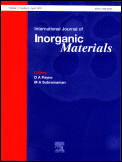
INTERNATIONAL
JOURNAL OF INORGANIC MATERIALS |
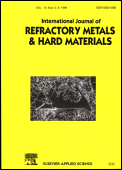 INTERNATIONAL
JOURNAL OF REFRACTORY METALS AND HARD MATERIALS INTERNATIONAL
JOURNAL OF REFRACTORY METALS AND HARD MATERIALSThis international journal publishes papers concerned with all aspects of the science, technology and application of refractory metals and hard materials. New technological developments now enlarge the scope to cover those metals with melting points around 2000 degrees Centigrade and higher, with similar powder metallurgical production and fields of application. This includes the following metals and their alloys: Zirconium, Niobium, Molybdenum, Ruthenium, Iridium, Hafnium, Tantalum, Tungsten, Osmium, Vanadium, Chromium, Rhenium, Rhodium. Advances in hard materials continue and the journal will continue to deal with the production, uses and properties of the carbides, nitrides and borides of these metals and those of titanium, as well as tools of ceramics, the superhard boron nitrides and diamond and related compounds. Papers are also published on the technologies of powder production [including their precursor materials], milling, granulation, cold and hot compaction, sintering, hot isostatic pressing, hot-pressing, injection moulding, as well as on the coating technologies for refractory metals, hard metals and hard materials. The characterization, testing, quality assurance and applications are also covered. Web location |
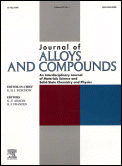 JOURNAL
OF ALLOYS AND COMPOUNDS
JOURNAL
OF ALLOYS AND COMPOUNDSAn Interdisciplinary Journal of Materials Science and Solid-State Chemistry and Physics The aim of the Journal of Alloys and Compounds is identical to the journal's aim under its previous title: Journal of the Less-Common Metals. The journal was originally intended to serve as an international medium for the publication of work on the physical sciences of usually called less-common-metals, their compounds and their alloys. Its great strength lies in the diversity of discipline which it encompasses, drawing together results from materials science, solid-state chemistry and physics. The interdisciplinary nature of the journal is evident in many subject areas. Experimental and theoretical approaches to materials problems require an active interplay between a variety of traditional and novel scientific disciplines. In much of the work published in the journal, synthetic and structural studies are combined with investigations of chemical and physical properties of alloys and compounds, contributing to the development of areas of current scientific interest. The Journal of Alloys and Compounds provides a unique international forum where materials scientists, chemists and physicists can present their results both to workers in their own fields and to others active in related areas. Table of content |
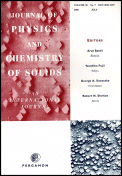 JOURNAL
OF PHYSICS AND CHEMISTRY OF SOLIDS JOURNAL
OF PHYSICS AND CHEMISTRY OF SOLIDSThe Journal of Physics and Chemistry of Solids is a well established international medium for publication of research in condensed matter and materials science. Emphasis is placed on experimental and theoretical work which contributes to a basic understanding of and new insight into the properties and behavior of condensed matter. General areas of interest are the electronic, spectroscopic and structural properties of solids, the statistical mechanics and thermodynamics of condensed systems, including perfect and defect lattices, surfaces, interfaces, thin films and multilayers, amorphous materials and nanostructures, and layered and low dimensional structures. Typical examples include the preparation and structural characterization of novel and advanced materials, especially in relation to the measurement and interpretation of their electrical, magnetic, optical, thermal and mechanical properties, phase transitions, electronic structure and defect properties, and the application of appropriate experimental and theoretical techniques in these studies. Articles are encouraged in all the above areas, but especially those which emphasize fundamental aspects of materials science. From time-to-time, Special Issues of the journal containing invited articles devoted to topical or rapidly developing fields are published. Table of content |
 JOURNAL
OF EUROPEAN CERAMIC SOCIETY JOURNAL
OF EUROPEAN CERAMIC SOCIETYThe Journal of the European Ceramic Society publishes the results of original research relating to the structure, properties and processing of ceramic materials. Papers of either an experimental or theoretical character will be welcomed on a fully international basis. Papers may cover any of the branches of ceramic science and technology and may relate to any of the so-called categories: structural, functional and traditional ceramics. The central objective is to sustain a high standard of research quality by means of appropriate reviewing procedures. In addition to the monthly regular issues, the journal publishes Refereed Reports from important conferences usually related to the European Ceramic Society. Table of content |
|
|
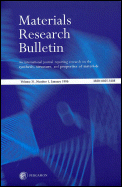 MATERIALS
RESEARCH BULLETIN MATERIALS
RESEARCH BULLETINThe Materials Research Bulletin is an international rapid publication journal reporting research on the synthesis, processing, structure and properties of materials. It deals with materials which have interesting electronic, magnetic, optical, mechanical or catalytic properties. Relationships between synthesis, structure and properties are discussed. Topics covered include new materials, high temperature and high pressure phase transitions, crystal growth, defect structure analysis, ceramics, intermetallics, non-crystalline solids, polymers and composites. Table of content |
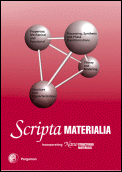 SCRIPTA
MATERIALIA SCRIPTA
MATERIALIA Scripta Materialia, the companion journal to Acta Materialia, is an International Journal for the Science and Engineering of Materials. Its purpose is to provide a medium for the rapid publication of papers which advance the understanding of the structural and functional properties of materials: metals and alloys, ceramics, solid polymers and glasses. Included are those aspects of the science of materials concerning the relationship between the structure of solids and their properties (mechanical, electrical, magnetic, optical and chemical) and the thermodynamics, kinetics and mechanisms of processes occurring within solids. Emphasis is placed on papers which seek to link the microstructure of materials to their macroscopic properties and which advance the understanding of structural and functional materials. Table of content |
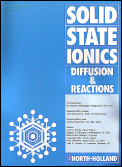
SOLID
STATE IONICS |
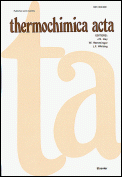
THERMOCHIMICA
ACTA |
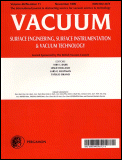 VACUUM VACUUM
The international journal Vacuum publishes high quality papers on latest advances in the many areas which now require the production and control of a working environment at pressure below one atmosphere. The topics covered by the journal are thus truly interdisciplinary and papers cover the interests of many groups, ranging from fundamental vacuum science to industrial systems and processes. This includes vacuum specialists, engineers, physicists, surface scientists, chemists, electronic device specialists, materials scientists. Typical papers cover new developments in vacuum pumping and instrumentation, vacuum measurement, kinetic theory, gas-surface interactions, surface analysis, plasma and ion-surface interactions and etching, nanometer-scale processing, ion implantation, surface modification and coating industry, PVD, CVD and ion/plasma-assisted PVD/CVD. The journal Vacuum welcomes concise papers, short communications and reviews in the above areas and will normally publish those meeting strict refereeing standards promptly after delivery of the manuscript to one of the Editors listed inside the front cover. Details on style and submission are given inside the back cover of the journal. Web location |
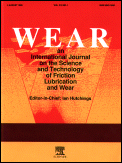 WEAR WEAR
This international journal is dedicated to the rapid publication of high quality papers on the important subjects of wear and friction, together with papers on closely related aspects of lubrication, contact phenomena or surface characterization. The scope includes all aspects of physics, chemistry, materials science and mechanical engineering which relate directly to the subjects of wear and friction; papers may approach the subject from a fundamental or technological viewpoint. Thorough refereeing of all papers, in accordance with normal procedures for international journals in science and engineering, ensures that Wear is an international forum of high quality for multidisciplinary communications on topics which include: the fundamental understanding of wear and frictional phenomena, including nanometre and atomic scale aspects of tribology; interactions between chemical processes (e.g. corrosion) and wear, and chemical aspects of lubrication (e.g. boundary lubrication); design and materials selection for the control of wear and friction; tribology of natural biological and artificial implanted materials; contact phenomena in the context of friction and wear; new materials and their tribological behaviour; wear and friction in cutting and forming processes; lubricants and mechanisms of lubrication in the context of wear and friction control; topics in surface physics and chemistry related to wear and friction. Papers concerned with these fields may be submitted. Facilities also exist for the prompt publication of short Research Reports and Letters subject to editorial approval. This journal is now included in the new online alerting service - Structural Integrity Alert - which forms part of the Structural Integrity Network Table of content |
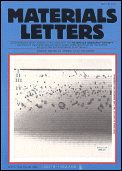 MATERIALS
LETTERS
MATERIALS
LETTERS